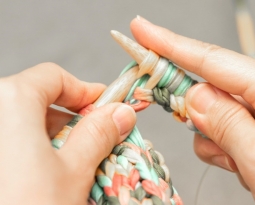Making the most of your self-care day
self-care
/sɛlfˈkɛː/
noun
- the practice of taking action to preserve or improve one’s own health.
- the practice of taking an active role in protecting one’s own well-being and happiness, in particular during periods of stress.
Self-care has become somewhat of a buzz word lately, everyone seems to be joining in with #selfcaresunday on social media and quite rightly so. I’m sure we’ve all heard the saying ‘you can’t pour from an empty cup’- well, self-care is about refilling that cup. It’s about more than simply resting (although that is an important part of it), and is vital to both our physical and mental wellbeing.
Okay so you’ve recognised how important self-care is, but where to start? There have more times than I’d care to admit where I’ve dedicated time to have a self-care day, but ended up sitting on the sofa, flicking through the TV for hours, feeling lethargic and bored. This often doesn’t leave me feeling nourished or refreshed, and sometimes even makes me feel worse.
Now, I’m not saying that having a day in front of the TV is inherently bad- if you find yourself feeling great after having a truly relaxing day, or inspired by a new series you’ve just discovered, then that’s amazing. What I’m trying to say, is that self-care days can often fall short if you haven’t taken the time to consider what you actually need out of them. So days I’ve spent on the sofa, with the fuel gauge on my cup still reading empty, may have actually been better spent doing something else.
So, how can you make the most of your self-care day?
Firstly, think about what you really need. Is there a task looming over you that you would feel much better for doing? Or do you need to completely forget about your to-do list for the day? Would you benefit more from having an afternoon nap, or going for a walk? Take some time out to honestly and openly reflect on how you are feeling, and think about what you would like to do to support yourself. Remember, you are the expert on your own needs, and there are no wrong answers. We’re all individual, with different needs at different times.
When I’m thinking about how I want to spend my time, I split my options down into four categories:
- Doing something productive
- Doing something physical
- Rest and recharge
- Doing something creative
Doing something productive
A really important point here is that it has to be something productive for you. This is not the time to be doing everyone else’s washing, or running errands for family or friends.
For me, doing something productive will often be tidying my room. I know that having a clean and clear space will make me feel much better, and I quite enjoy popping on my favourite podcast and getting organised.
Doing something physical
This could literally be as simple as taking 5 minutes to stretch your body. It could be going for a walk, doing some yoga at home, or going for a run. Exercise can be a great mood booster, as it releases ‘feel good’ endorphins, and can also increase self-esteem.
I have recently taken up running, and find pounding the pavement almost meditative. It’s a time where I can pop some music in, and think about nothing more than putting one foot in front of the other. Reaching milestones like my first 5K also make me feel really proud and empowered.
Rest and recharge
Sometimes we simply need to rest our bodies and minds. Think about what will leave you feeling revitalised and refreshed. A long bath, an afternoon nap, taking some time to sit in the garden and listen to the birds? It could be reading a new book, or watching a favourite film.
Doing something creative
Being creative or learning a new skill can feel incredibly satisfying. It is a way of investing in ourselves, and doing something fun at the same time! You could try out a new recipe, learn to knit, draw, paint or try your hand at pottery. Your imagination really is the limit. Try to be mindful that these activities are about filling our cups, rather than being or creating something ‘perfect’. If you start beating yourself up because owl you drew doesn’t look anything like a bird, then that defeats the point!
Remember, you by no means have to do something from every category during your self-care day. You can cherry pick what feels most helpful for you. There is no shame in recognising that you need the whole day to rest and recharge. If you do want to do things from multiple categories, I find it helpful to think about when you have most energy in the day and do activities that are physical or require a lot of effort/concentration then. For instance, I’m not a morning person, so I might take my time having a long shower and reading a book in the morning, then go for a run in the evening.
It’s also important to acknowledge that not everyone has the time to dedicate a whole day to self-care. Instead, building small moments and acts of self-care into your everyday life can be just, if not more, valuable. It can be really helpful to make a list of ‘non-negotiable’ acts of self-care that you commit to carrying out each day. These could be, but aren’t limited to:
- Brushing your teeth and washing your face morning and evening
- Meditating for 10 minutes
- Laying your clothes out the evening before, so that mornings aren’t so stressful
- Going outside for at least 10 mins
- Checking on your houseplants
- Eating 3 meals
- Drinking enough water
- Putting on clean clothes
- Take your vitamins and any medication you may have
It can be really helpful to write these down, or share them with a close friend or loved one, so they can help to keep you accountable.
Hopefully this blog has given you some ideas about how to plan a self-care day, or incorporate self-care into your daily life. While it may seem simple, it is a really powerful tool. Showing up for yourself in these ways sends an implicit message: you are important, you are worthy of investing time in yourself, and you deserve to rest, put yourself first and feel good.








